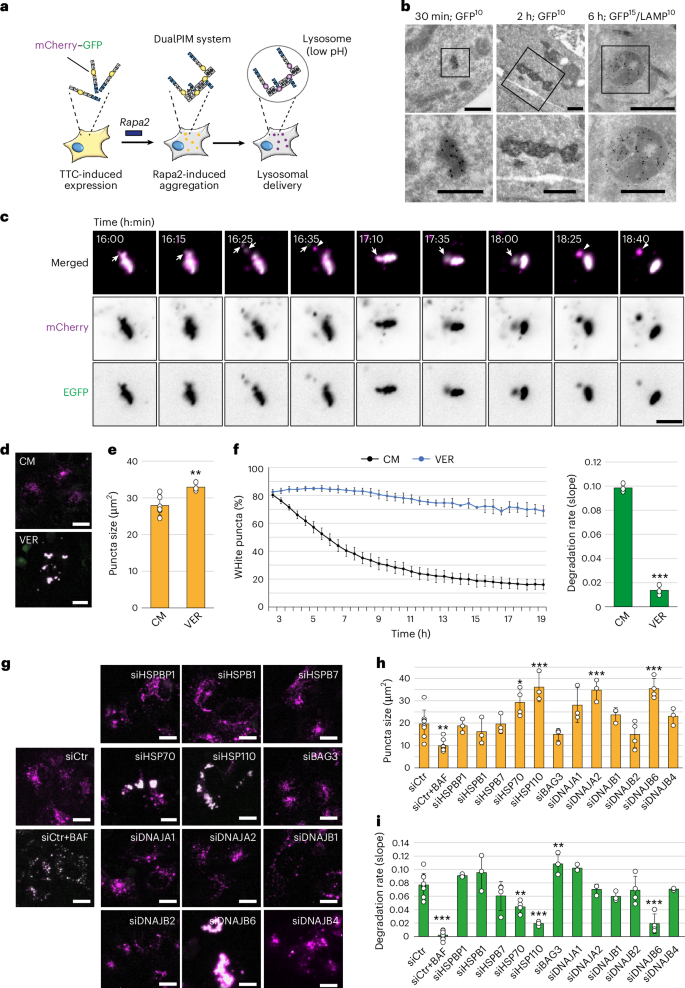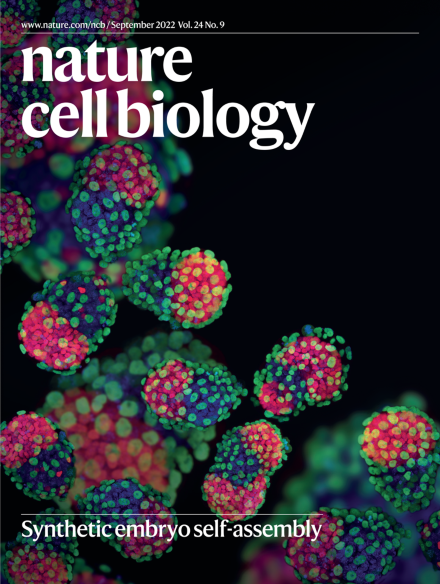基于伴侣-蛋白酶体的碎裂机制对于聚合是必不可少的
IF 19.1
1区 生物学
Q1 CELL BIOLOGY
引用次数: 0
摘要
蛋白质质量控制中的扰动导致错误折叠蛋白质和蛋白质聚集体的积累,这可能损害健康和寿命。消除蛋白质聚集的一个关键机制是聚集性,这是一种选择性的自噬。在这里,我们揭示了在自噬清除各种类型的非晶态聚集体之前需要碎片化。这种断裂需要19S蛋白酶体调节颗粒和DNAJB6-HSP70-HSP110伴侣模块。这两个参与者对于聚集体压实也是必不可少的,聚集体压实导致选择性自噬受体聚集,从而启动聚集体的自噬去除。我们还发现,同样的参与者延缓了与疾病相关的亨廷顿蛋白内含物的形成。本研究为19S调控颗粒和DNAJB6-HSP70-HSP110模块赋予了一种新的功能,并揭示了聚合需要一个零碎的过程,与蛋白质病变相关。本文章由计算机程序翻译,如有差异,请以英文原文为准。


A chaperone-proteasome-based fragmentation machinery is essential for aggrephagy
Perturbations in protein quality control lead to the accumulation of misfolded proteins and protein aggregates, which can compromise health and lifespan. One key mechanism eliminating protein aggregates is aggrephagy, a selective type of autophagy. Here we reveal that fragmentation is required before autophagic clearance of various types of amorphous aggregates. This fragmentation requires both the 19S proteasomal regulatory particle and the DNAJB6-HSP70-HSP110 chaperone module. These two players are also essential for aggregate compaction that leads to the clustering of the selective autophagy receptors, which initiates the autophagic removal of the aggregates. We also found that the same players delay the formation of disease-associated huntingtin inclusions. This study assigns a novel function to the 19S regulatory particle and the DNAJB6-HSP70-HSP110 module, and uncovers that aggrephagy entails a piecemeal process, with relevance for proteinopathies. Mauthe et al. find that protein aggregate clearance requires fragmentation of the aggregate by a chaperone module and a proteasomal regulatory particle for recruitment and clustering of selective autophagy receptors to initiate phagophore formation.
求助全文
通过发布文献求助,成功后即可免费获取论文全文。
去求助
来源期刊

Nature Cell Biology
生物-细胞生物学
CiteScore
28.40
自引率
0.90%
发文量
219
审稿时长
3 months
期刊介绍:
Nature Cell Biology, a prestigious journal, upholds a commitment to publishing papers of the highest quality across all areas of cell biology, with a particular focus on elucidating mechanisms underlying fundamental cell biological processes. The journal's broad scope encompasses various areas of interest, including but not limited to:
-Autophagy
-Cancer biology
-Cell adhesion and migration
-Cell cycle and growth
-Cell death
-Chromatin and epigenetics
-Cytoskeletal dynamics
-Developmental biology
-DNA replication and repair
-Mechanisms of human disease
-Mechanobiology
-Membrane traffic and dynamics
-Metabolism
-Nuclear organization and dynamics
-Organelle biology
-Proteolysis and quality control
-RNA biology
-Signal transduction
-Stem cell biology
 求助内容:
求助内容: 应助结果提醒方式:
应助结果提醒方式:


